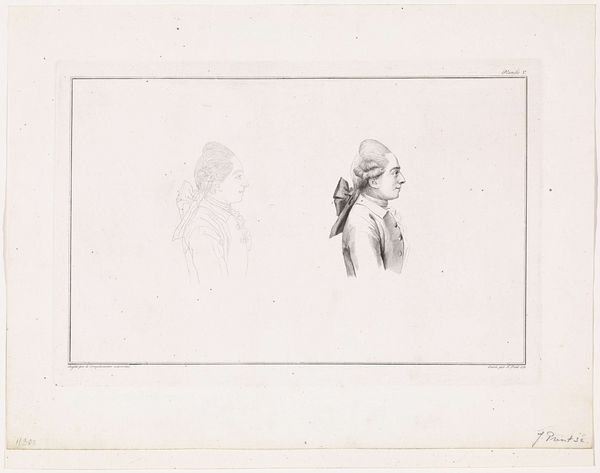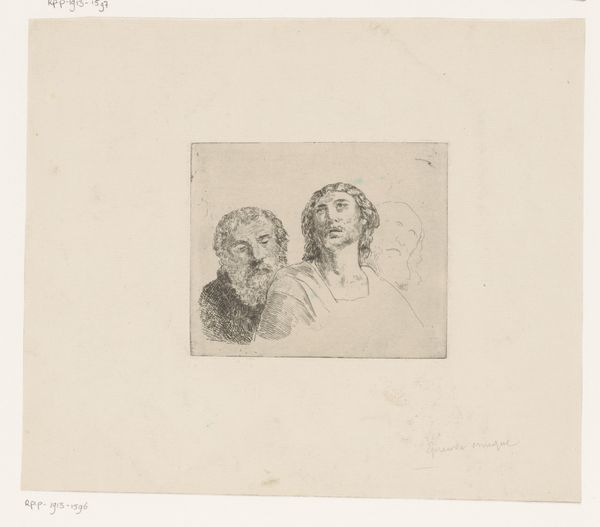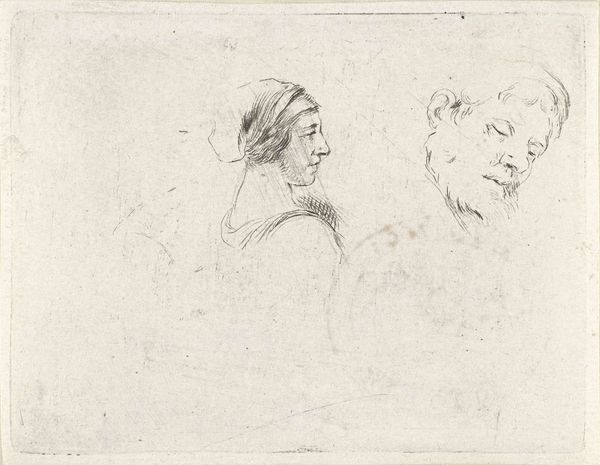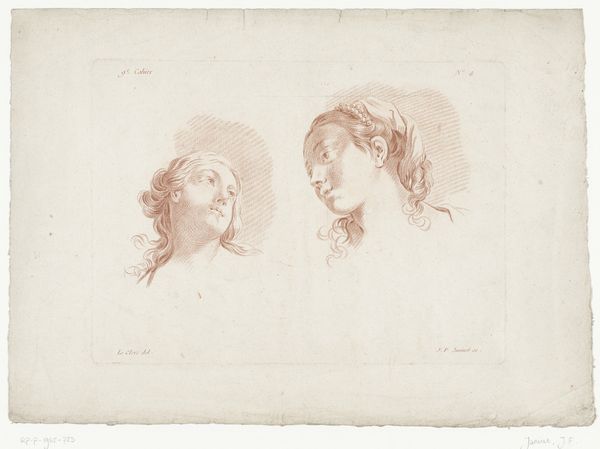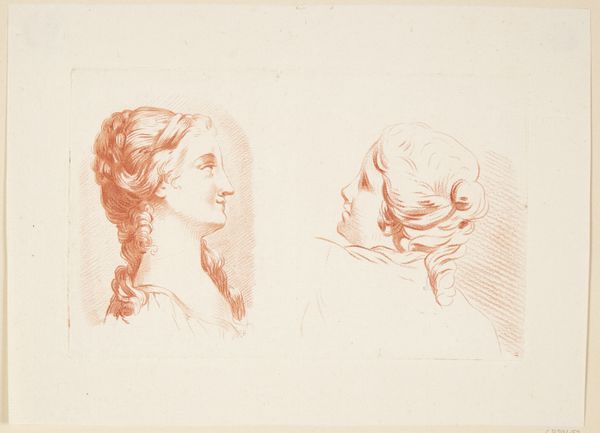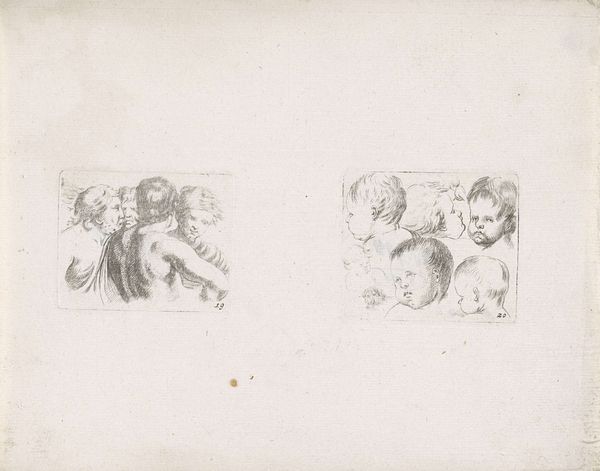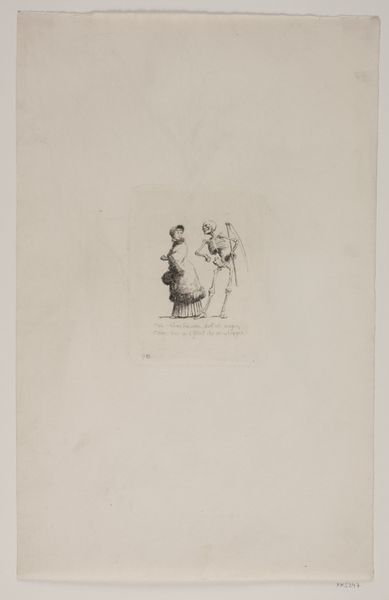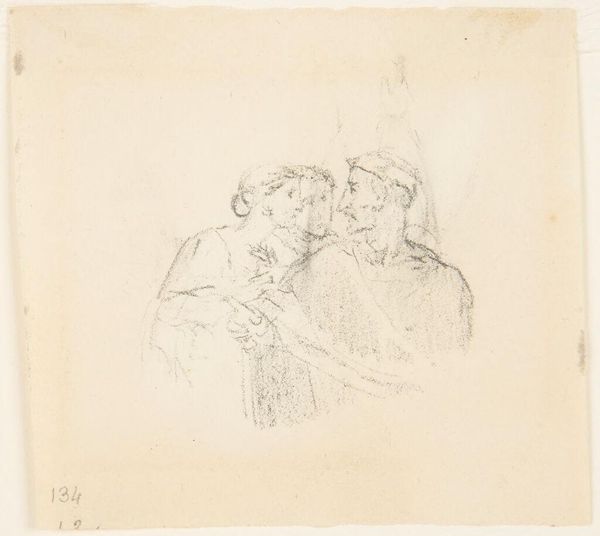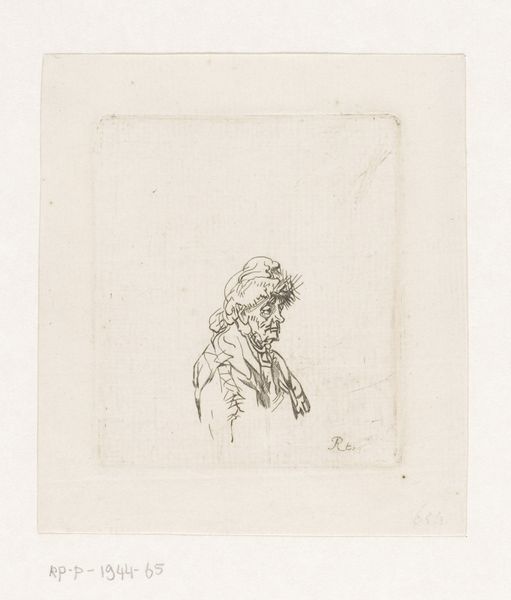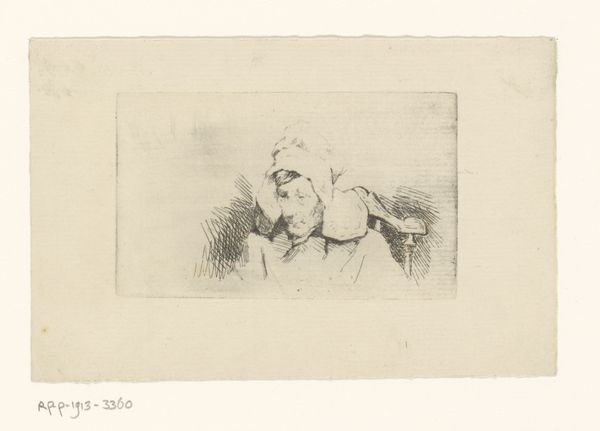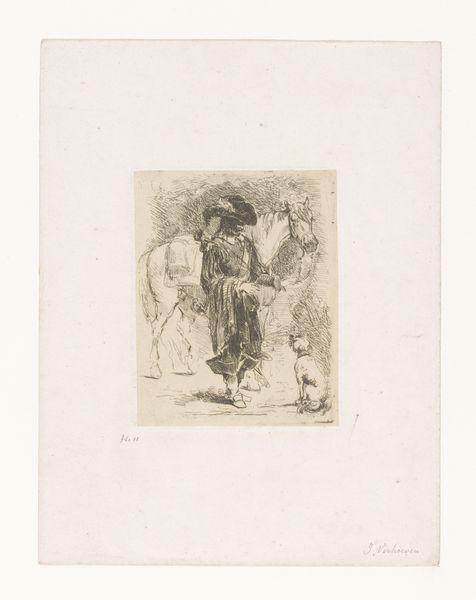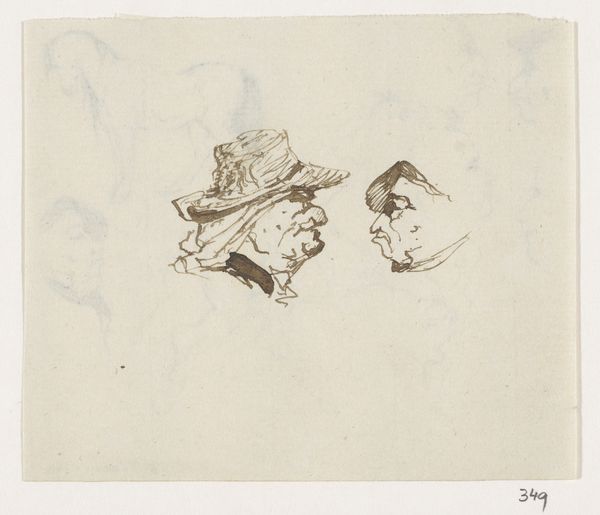
Portret van de gezusters Anna en Celeste Coltellini 1757 - 1825
0:00
0:00
drawing, pencil
#
portrait
#
drawing
#
neoclacissism
#
light pencil work
#
pencil sketch
#
old engraving style
#
personal sketchbook
#
idea generation sketch
#
ink drawing experimentation
#
pen-ink sketch
#
pencil
#
sketchbook drawing
#
pencil work
#
academic-art
#
sketchbook art
Dimensions: height 85 mm, width 115 mm
Copyright: Rijks Museum: Open Domain
Baron Dominique Vivant Denon created this print of Anna and Celeste Coltellini using etching, a printmaking process that democratized image production in its day. The process begins with a metal plate coated in wax. The artist then uses a needle to draw through the wax, exposing the metal. The plate is then submerged in acid, which bites into the exposed lines, creating grooves. Ink is applied to the plate, filling these grooves, and the surface is wiped clean. Finally, paper is pressed against the plate, transferring the ink and creating the print. The resulting image possesses a distinctive character, a network of fine lines creating delicate tonal variations. Compared to painting, etching allowed for a relatively quick and efficient reproduction of images, making art more accessible. This reflects the changing social and economic landscape of the time, where the rise of a merchant class fueled a demand for art beyond the traditional patrons of the aristocracy and the church. So, in considering this seemingly simple portrait, remember the broader context of material innovation and its role in shaping artistic expression and access.
Comments
No comments
Be the first to comment and join the conversation on the ultimate creative platform.
